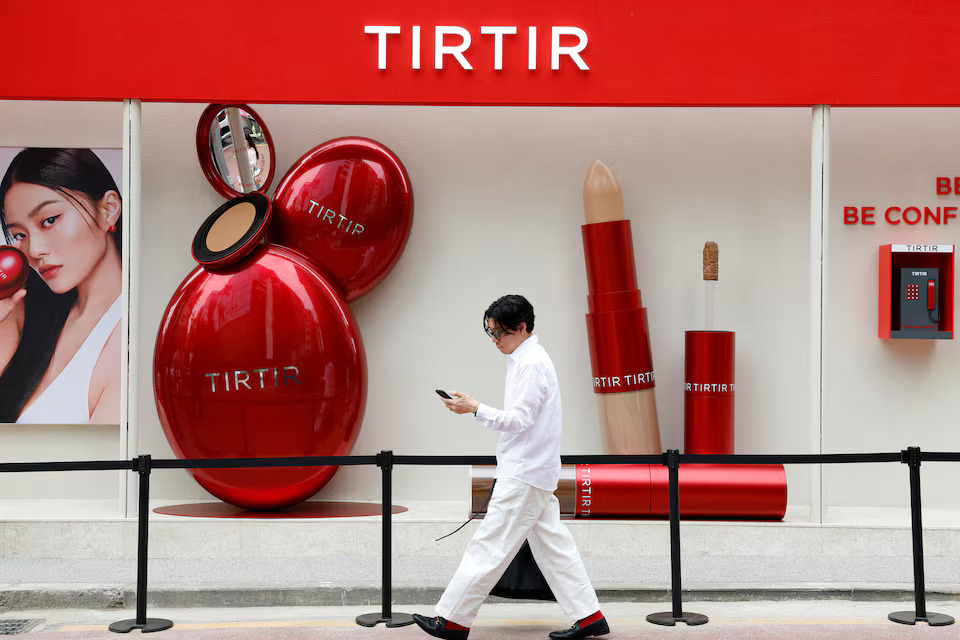South Korea’s K‑beauty wave shows no sign of slowing. According to Reuters, a new generation of cosmetics startups—such as Tirtir, d’Alba, Torriden, and Beauty of Joseon—are making bold moves into U.S. physical retail even as tariffs threaten to raise costs. This article explores the factors driving the K-beauty U.S. expansion, how brands are navigating trade headaches, and what this surge means for the broader cosmetics industry.
The Driver Behind K‑beauty U.S. Expansion
What’s fueling the K-beauty U.S. expansion? The answer lies in a synergy of viral marketing, product quality, and cultural influence. Brands are capitalizing on success stories from cushion foundations that cater to diverse skin tones and lightweight sunscreen formulas highly praised by U.S. users. They benefit from K‑pop and K‑drama enthusiasm, which prime American consumers for Korean-made products.
E-commerce platforms, especially Amazon and social media, have played pivotal roles in bringing K‑beauty mainstream. Viral TikTok videos and influencer endorsements have turned niche brands into instant bestsellers before they even hit shelves . Encouraged by that momentum, brands are now pushing into brick-and-mortar stores like Ulta, Sephora, Costco, and Target to cement their presence.
Tariffs and the Strategy That Softens the Blow
The pending U.S. tariffs up to 25% on South Korean products could have derailed these expansion efforts. Yet, many K‑beauty startups appear unfazed. Their lean manufacturing model, often outsourcing to contract manufacturers such as Cosmax and Kolmar, keeps costs low and margins high enough to absorb tariff increases.
Tirtir’s CEO An Byung‑Jun mentioned that while the baseline 10% tariff is “endurable,” even a 25% levy may only require minor price adjustments. Meanwhile, South Korea is aggressively pursuing exemptions through U.S. trade talks. Some consumers, in anticipation of rising prices, are even "panic-buying" sunscreens and face serums, reinforcing strong demand ahead of any tariff implementation.
The Importance of Physical Stores
Digital sales have powered much of K‑beauty’s growth, but experts see physical presence as essential for long-term success. Reuters reports that Olive Young plans to open its first U.S. location in Los Angeles, tapping into an existing base of online shoppers.
Entering major retail chains reinforces brand visibility and availability. Tirtir aims to double its U.S. sales this year with shelf placements in Ulta. Brands like Torriden and Beauty of Joseon are launching in Sephora, while d’Alba explores partnerships with Costco and Target. With online growth softening, bricks-and-mortar expansion offers a fresh avenue for customer acquisition.
Navigating a Competitive Landscape
Even as K‑beauty rides the cultural wave, startup brands face increasing pressure. Some, like COSRX under AmorePacific, are hitting a plateau, and competition from fast-fashion beauty lines is escalating. To stay ahead, brands are doubling down on product quality, innovation, and U.S. production.
Kolmar Korea and Cosmax are expanding U.S. manufacturing capabilities, opening plants in Pennsylvania and New Jersey and increasing sunscreen output two- to threefold. Local production helps mitigate tariff impact by reclassifying products as U.S.-made, thus avoiding tariffs altogether. Meanwhile, South Korea has announced a ₩40 billion fund to support K‑beauty startups in scaling up and weathering trade shifts.
Sustaining Growth in a Changing Market
Looking ahead, several elements will shape the success of the K-beauty U.S. expansion:
- Tariff negotiations: Whether South Korea secures exemptions will impact product pricing and growth strategies.
- Local sourcing: Increasing U.S. manufacturing and packaging can shield brands from import costs and shipping delays, promoting agility .
- Consumer loyalty: As CEO An put it, K‑beauty’s low price–high quality formula is what keeps American buyers coming back .
- Retail partnerships: Physical retail is proving vital. The upcoming stores at Ulta, Sephora, Target, Costco, and Olive Young will test long-term viability.
Conclusion
The K-beauty U.S. expansion shows how cultural influence and smart business models can overcome trade headwinds. Startups prepared thorough launch strategies, e-commerce led, tariff resilient, and bricks-and-mortar ready. Their success signals a shift: K‑beauty is staying power in American retail, poised to endure beyond fleeting trends or policy disruptions.
Read More






 Thursday, 20-11-25
Thursday, 20-11-25







